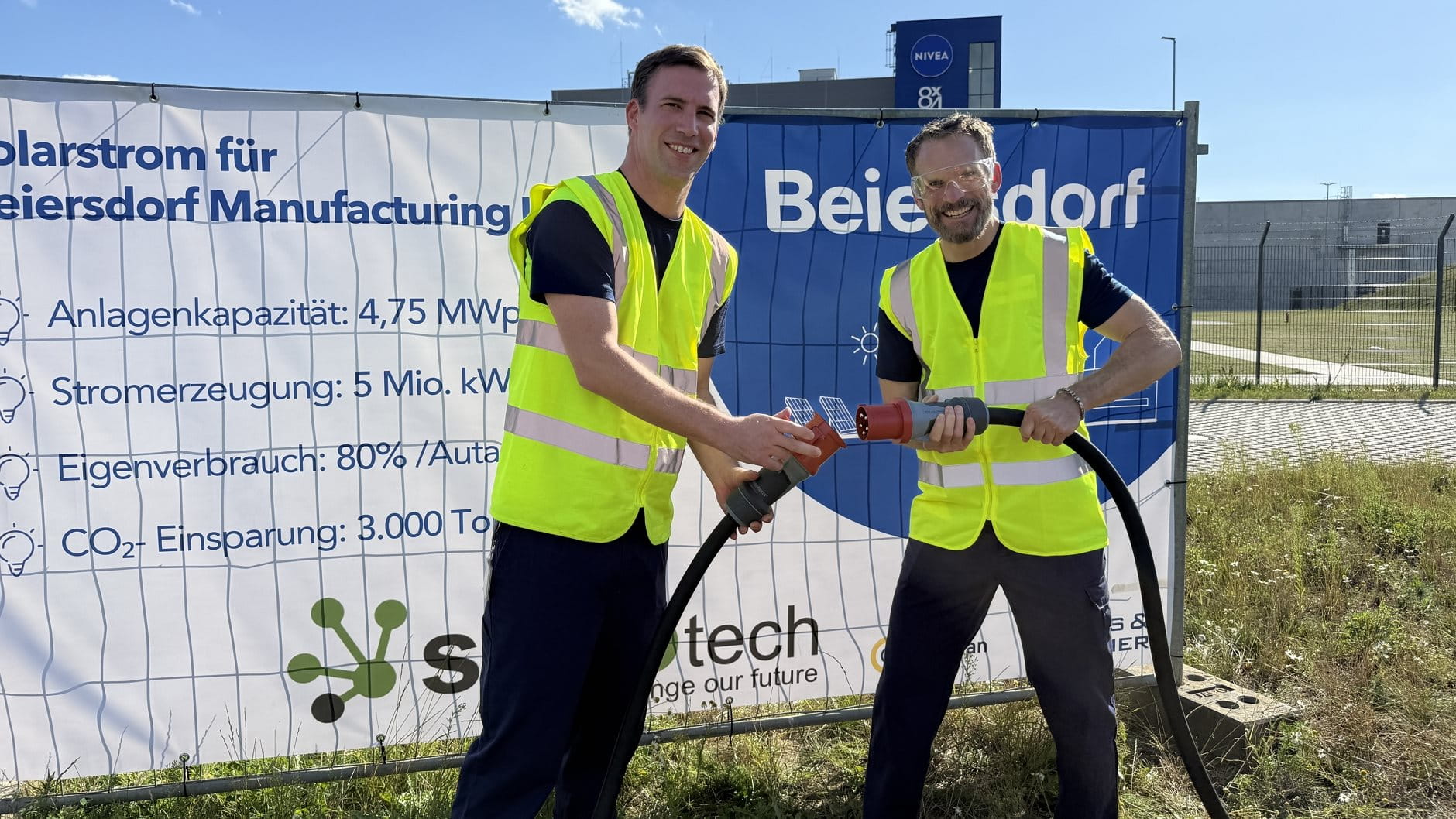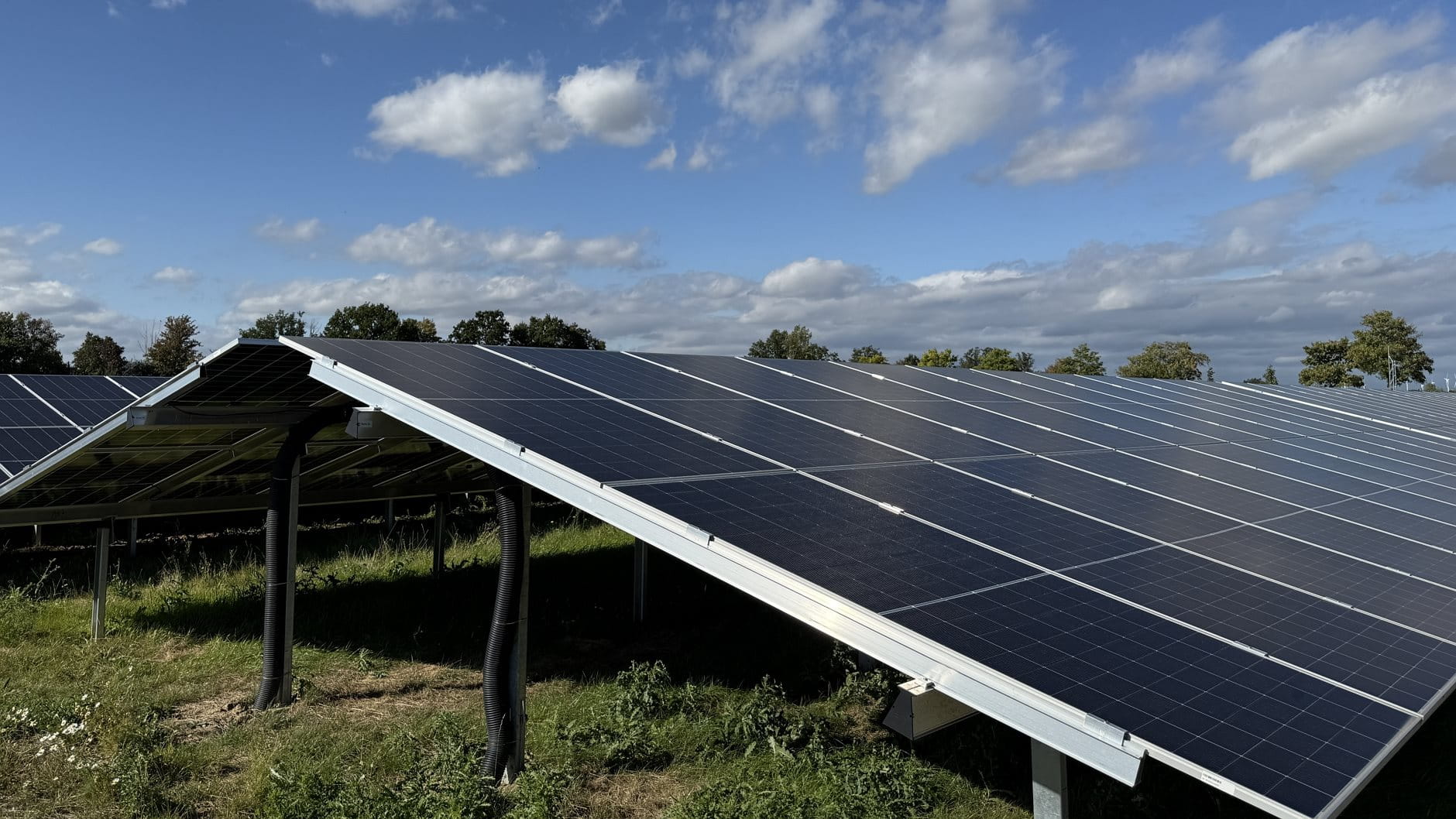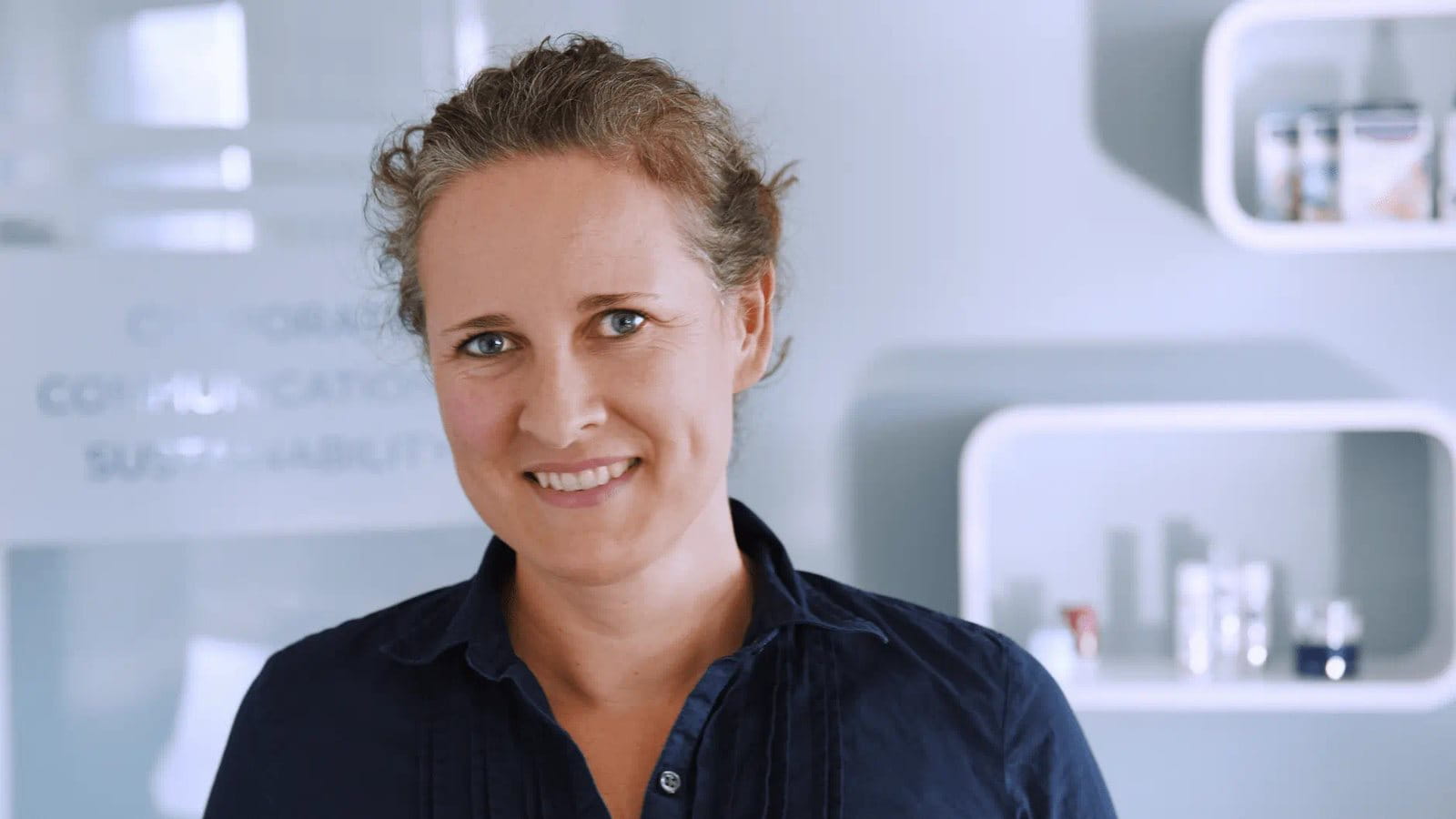Since its opening in 2023, our plant in Leipzig has been setting a benchmark in terms of sustainability: by using biogas, it already operates climate-neutrally – but that’s just the beginning. With the installation of a powerful photovoltaic (PV) system, the plant is now taking the next big step: with the idea to generate more energy on site than is needed for its ongoing operations, it aims to become an “Energy-Plus” site.
Dr. Lars Ratschow, Supply Chain Sustainability Manager, and Stephan Roelen, Plant Manager in Leipzig, share about the implementation of this project and explain how the new PV system contributes to Beiersdorf’s Sustainability Agenda and targets.



